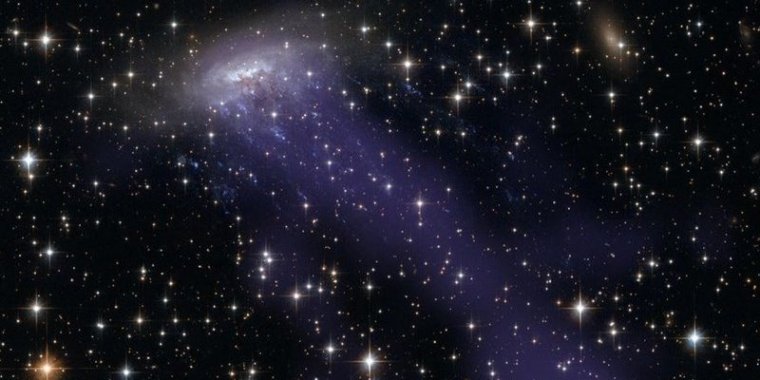| News / Science News |
Mysterious Radio Signals Detected from Deep Space
An initiative set up to find signs of intelligent life in the universe has detected a series of mysterious radio signals from a dwarf galaxy 3 billion light-years away.

Mysterious radio signals detected from deep space. ![]()
Scientists with Breakthrough Listen say they’ve found 15 fast radio bursts, or FRBs, from a deep space “repeater” called FRB 121102.
The numbers indicate when the first signal was discovered, on Nov. 2, 2012.
While a few other FRBs have been detected, what makes this one unique is that it was heard again in 2015, and its location pinpointed a year later.
Breakthrough Listen used instruments at the Green Bank Telescope in West Virginia to observe that location over 5 hours on Saturday, detecting 15 bursts over the entire 4 to 8 GHz frequency band.
Possible explanations for FRBs range from outbursts from rotating neutron stars with extremely strong magnetic fields, to more speculative ideas that they are directed energy sources used by extraterrestrial civilizations to power spacecraft.
Earlier this year, Harvard researchers speculated that these radio bursts could be “beams set up by extragalactic civilizations to potentially power light sails.”
However, they conceded that it was purely speculative, and several other scientists have cautioned against linking these bursts to possible alien intelligence.
How they are caused remains up for debate, and in the case of FRB 121102 the repeats add to the mystery. While some radio bursts could be caused by a single catastrophic event such as a supernova, those events wouldn’t repeat.
And in this case, the location ― a dwarf galaxy with just 1 percent of the mass of our own Milky Way ― makes the signal even harder to explain.
One would generally expect most FRBs to come from large galaxies which have the largest numbers of stars and neutron stars. Neutron stars – remnants of massive stars – are among the top candidates to explain FRBs.
The distance of the dwarf galaxy is another complicating factor. It’s so far away that the signals detected here today left their source at a time when life on Earth was limited to single-cell organisms.
It would be another billion years before even the simplest multi-cellular life began to evolve. (Tasnim News Agency)
YOU MAY ALSO LIKE




